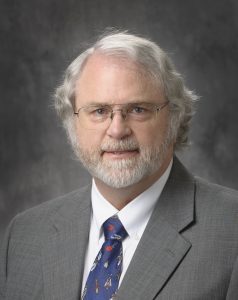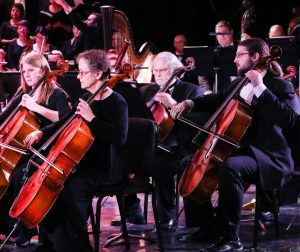 All musicians have different stories of how their interest in music began. For Michael Kanost, it began at the young age of five when he heard a piano program on the radio. Soon after, he began taking piano lessons. As he grew older, he became interested in orchestra and began playing bass in fourth grade.
All musicians have different stories of how their interest in music began. For Michael Kanost, it began at the young age of five when he heard a piano program on the radio. Soon after, he began taking piano lessons. As he grew older, he became interested in orchestra and began playing bass in fourth grade.
When Kanost reached high school, he realized he could play in a string quartet with fellow students as a cellist. He quickly picked up the cello and taught himself to play. He continues to play in a quartet today with a group of friends in Manhattan in addition to playing in the cello section of the Salina Symphony.
The multi-instrumentalist also has a deep appreciation for science. Kanost became interested in science, specifically geology, in fifth grade. This prompted his parents to buy him a rock collecting kit for Christmas. This set the course for the career path he would pursue.
Throughout his college years at Colorado State University, Kanost participated in orchestra and took cello lessons. Kanost graduated with a bachelor’s degree in zoology. He then continued his education, earning a Ph. D. in entomology from Purdue University.
Today, Dr. Kanost serves as a University Distinguished Professor in the Department of Biochemistry and Molecular Biophysics at Kansas State University.
Though Kanost earns a living in science, his interest in music has continued throughout his life. Kanost states that he often plays music for his students before class and listens to music when he writes about research. He listens to a variety of music genres, including jazz, bluegrass, blues, and classical. “I like music with some complexity and big ensembles with full sound,” he said.
In expo unding on both of his passions/interests, Kanost defines the “art” of science:
unding on both of his passions/interests, Kanost defines the “art” of science:
“Science involves creativity in deciding what question will be interesting and important to investigate and in designing good experiments. It also requires good communication, and that works best with some art in writing and illustration.”
Kanost also pointed out an interesting similarity between working in science and playing in an orchestra. “Both require being part of a group working together toward a common goal,” he said. “All of the individual contributions are necessary to make the science or the music.”
The Salina Symphony is currently on hiatus from rehearsing and performing due to the COVID-19 pandemic. Kanost misses creating music with fellow musicians and hearing how all of the parts come together to form one big sound. “Music has been a source of much pleasure in my life, and the Salina Symphony has been a welcoming community to share that with me.”
—–
Written by Gavy Garay
Do you have an idea for a future Symphony Spotlight story? Contact Adrienne Allen at 785-823-8309 or execdir@salinasymphony.org.
